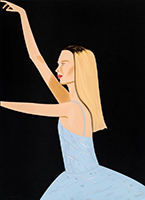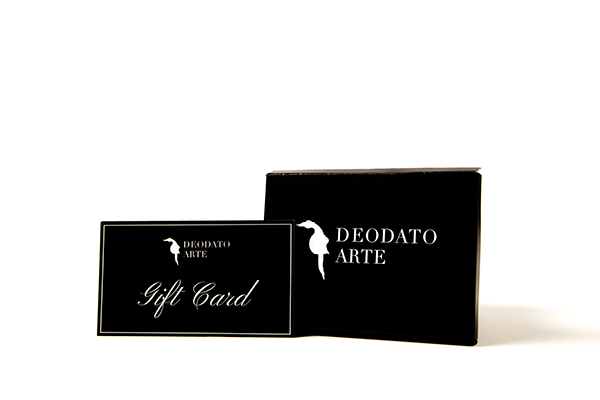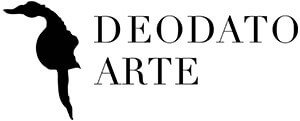
On the occasion of the release of Mr. Savethewall's The Spray Can Project, the Deodato Arte gallery made an exclusive interview that explores the artist's creative process.
Pierpaolo Perretta, aka Mr. Savethewall, you are finally launching your spray can project. How did the idea come about and what is the significance of this series of works?
The idea for The Spray Can Project was born in Los Angeles. While I was working at a fair together with Deodato [Deodato Salafia, gallerist Editor's note], I had the opportunity, in the folds of my free time, to walk around the streets of Los Angeles looking for urban art and looking, in general, for inspiration and curiosity.
There are areas in Los Angeles, particularly on Melrose Avenue, where you can find numerous street art works, but they are almost all very well-known figures in the urban art world. After the initial impact of seeing work by the great Obey, Mr. Brainwash, HIJACK, Alec Monopoly and so on, what struck me the most was something else. There is a constant throughout the city that led me to a deep reflection on the birth, nature, and authenticity of urban art: the sticker. The sticker is highly personal, different from one artist to another, identifying an artist, even if they may not necessarily be famous.
I noticed how some were repeated while maintaining a great variety. There were all sizes of them, from small stickers to actual posters. And so did the techniques vary, from handmade on paper to printed ones. An urban artist with his stickers becomes recognizable, acquires an identity. And each sticker passes a different message, just like urban art as a whole. The sticker is the perfect tool to leave a political message, where political does not mean left or right, but something that makes people think.
In Los Angeles, stickers are the common denominator on every corner, on every street. There are areas like Melrose Avenue where the walls are full, there are areas where you have to go and dig them out and when you find them it's a thrill. They tell you something about that artist. So many don't even have a hashtag, an Instagram account. They don't have anything. If a person who doesn't seek for a profit decides to draw something and go and stick it up, why does he do it? He does it because of an urgency, because no matter what, he has to leave a gesture of his existence and thought.
I find stickers a very powerful tool of urban art. For me the tools of urban art are the spray cans and stickers. I have chosen to pay homage to these two tools in my very personal Spray Can Project. The sticker reinterprets, through my frog, important figures who have left their mark. There is Michael Jordan, the Madonnina, Banksy, Queen Elizabeth and many others. While the cans are my work, they are the color. I decided to combine spray cans and stickers to leave my message and to pay homage to the essence of urban art.
Does the tool become a work of art?
That's right. But, many times we don't realize that it is not the tool that makes the artist. Using the stencil, for example, is not imitating Banksy. In the same way you can have the same oil paints as Picasso, but that doesn't make you Picasso. The tool is available to everyone, but the result is not the same. Sticker, stencil, and spray can are the tools, but the result depends on who uses them.
Each canister is unique, they are not mass produced. Can you tell more about this choice?
Each canister is unique because each canister is different. There are on color imprints, they are dirty, they are dented. I love the imperfection of the artwork, for me the more imperfect the artwork is the more it makes you realize that we are perfectible, that we can make mistakes and that especially in the mistakes we are authentic.
Each of us tends to improve ourselves more and more, but only when the end result is not "perfect" there is authenticity. Even a machine can create perfection, but there is a difference if I hand-make it or if I print it. I like it when I discover in my works a fingerprint, a dripping. In the imperfection I find the authenticity of my artwork.
The variety of stickers on the cans reflects my work and my artistic research. The subject is always my frog [protagonist of the series "Kiss Me" Ed] who tells how in each of us there could be Elvis Presley, there could be the Queen of England, there could be Batman, there could be Michael Jordan. Inside us there is an incredible potential, we see ourselves all the same, all standardized, and instead we are all different, with our merits and our flaws. The frog, the common thread of the project, takes on a new disguise each time. It is nice to see how everyone is inspired by someone.
The decision to use my used cans also brings with it interesting factors from a collection standpoint. I use a lot more cans in black, in turquoise, in green. These are the colors of my works, and this allows a certain type of canister to be associated with a certain type of work. I can associate a set of cans with the canvas I made with them.
The canisters also are a limited number because I use about 3-400 canisters a year. They are not infinite and certain colors (such as gold, silver) are much rarer because I use them less.
The cans you use for your works acquire a second life. This seems to me to be a very topical issue and in line with your poetics....
I am very pleased with the idea that they are not disposed of. I decided to accompany the can with the motto "Can you save the spray can?" which besides being able to be read infinitely [the phrase starts and ends with "can," creating a loop Ed] is emblematic of my poetics. It is like saying "Can you save the wall?" or, why not, "Can you save the planet?"
From inspiration to stickers to bombing, in this project you look more at the underground and urban side of street-art.
Absolutely.
In the face of how street art is now modified "The Spray Can Project" gives a strong message.
As a Post-Street Artist my idea represents an evolution. The moment urban art achieved fame we finally realized that the only global movement of the 2000s that can be recognized as such is precisely urban art. The moment it is consecrated by the art system the most underground aspect perhaps is lost.
Sticker struck me precisely because I found it authentic. In its fragmentation, in its high diversification: what is most capable of being present is recognized. And stickers evolve, some people put a hashtag, some people put a QRcode. The potential is enormous.
I feel that the project that is coming to life identifies me and tells something about me, tells something about my work and tells about the important experience I had in Los Angeles.











 Register
Register Wishlist
Wishlist Contact Us
Contact Us





